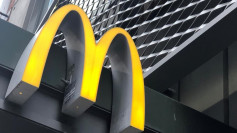SpaceX confirms a beta test of its Starlink satellite megaconstellation being assembled in low Earth orbit (LEO) will take place in August and will later be followed by public beta testing in November.
It previously said Starlink will begin offering high-speed, low latency and low cost commercial broadband internet service in the northern United States and southern Canada before the end of this year. It will then rapidly expand the service to near global coverage in 2021.
SpaceX CEO Elon Musk also said Starlink's internet speed will rival existing Earth-bound services. The Starlink network will have latency below 20 milliseconds. Musk said this means somebody can play a fast-response video game at a competitive level. SpaceX updated the Starlink website Friday, as it moves closer to its goal of providing direct-to-consumer broadband from space later this year.
From May 24, 2019 when it first orbited its first 60 small satellites (smallsats), Starlink has placed 538 smallsats into LEO in nine successful missions. Each Starlink smallsat weighs only 260 kg (570 lbs).
The last Starlink mission on June 13 (v1.0 L8) saw a SpaceX Falcon 9 B5 launch vehicle deploy 58 Starlink v 1.0 smallsats. The tenth mission set for June 22 will loft 60 v1.0 smallsats.
SpaceX plans to deploy 1,584 Starlink smallsats to provide near-global service by late 2021 or 2022. When completed by 2025, the entire Starlink megaconstellation will consist of some 30,000 smallsats -- the largest of its kind in history.
Starlink will become the main money earner for Musk's space ventures. Its revenues are expected to exceed $30 billion by 2025 compared to SpaceX, whose revenues are projected at $5 billion in the same year. Musk said SpaceX's annual launch revenue came to $2 billion in 2019 and will top-out at $3 billion before 2025.
Starlink will provide satellite internet connectivity to the Earth's underserved areas and competitively priced service to urban areas. It's designed to deliver high-speed broadband internet to areas where access has been unreliable, expensive or totally nonexistent. Musk said SpaceX needs positive cash flow from Starlink to realize SpaceX's ultimate aim of sending the first humans to Mars by the 2030s.
On Friday, SpaceX updated the Starlink website by urging users to receive updates on Starlink news and service availability in their areas. There is an online form that allows prospective customers to apply for updates and access to a public beta test of the Starlink service. Pricing has not been announced, however.






